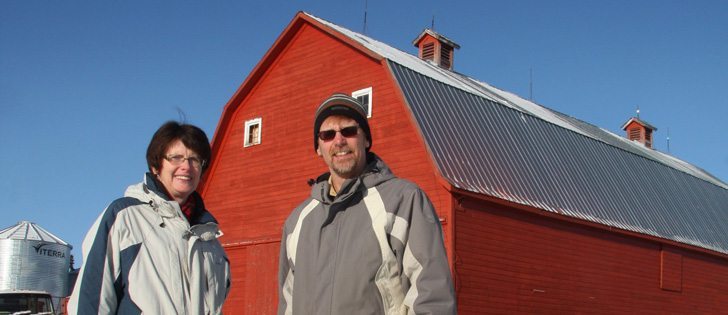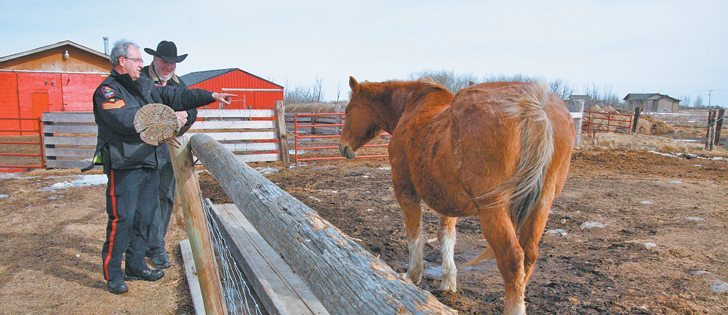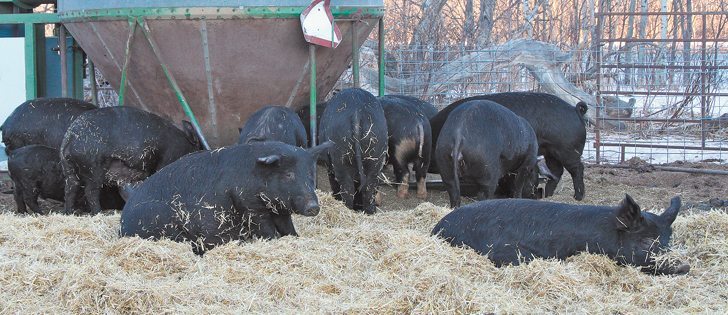Adopting a different approach | Advantages and challenges running a 2,000 acre operation in Saskatchewan
HERSCHEL, Sask.— Tim and Lavonne Wiens are bucking the bigger-is-better trend in agriculture.
The couple operates a 2,000 acre grain farm near Herschel, Sask., surrounded by a Hutterite colony, a large corporate farm and other big operations.
“We’re one little bird in a great big flock here,” said Tim.
That necessitates a different approach to the business.
“Because I’m a small farmer, I have to maximize returns from all my acres,” he said.
Larger farms use economies of scale to reduce their per acre costs. The Wiens farm focuses on the revenue side of the business by producing niche crops wherever possible.
Read Also

Sustainable food has ‘lost all meaning’: prof
That marketing strategy is deader than a doornail, says a University of Guelph professor who specializes in consumer preferences and perceptions of agriculture and food.
All of the canola planted on the farm is specialty canola. The couple has also been growing rapeseed for the past 15 years. They receive a price premium for both crops.
Tim said there is more work involved in growing identity preserved crops but it isn’t too onerous. And he likes some of the provisions in the contracts like on-farm pickup and act of God clauses.
They also grow wheat and large green lentils and are considering getting into peas and malt barley production this spring.
Lavonne is happy the farm has downsized from the days when it was a 3,000 to 4,000 acre operation. They are no longer renting land. It is owned by them or Tim’s mother.
“I like that we’ve cut back. It’s not quite so stressed,” she said.
“I know we can make it with 2,000 acres. We do very well for what we have.”
Tim said the farm has benefited from good succession planning, low debt levels and lessons learned in the 1980s and 1990s when grain prices were depressed.
“The margins were thin and we really learned to have sharp pencils then,” he said.
There are some challenges running a small operation. It’s tough to find a 300 h.p. tractor, a small air drill equipped with the latest technology or a combine the size he needs.
“On the other side, at harvest time we can rest easy knowing that I don’t have 20,000 acres that are going to be rained on tonight.”
Tim grew up in the Herschel area. His dad bought the land where their home is situated in the mid-1970s.
He moved to Winnipeg after completing an electronics course and got a job with CTV working in the mobile electronics truck where he spent weekends helping broadcast Winnipeg Jets and Blue Bombers games.
In his spare time, he would go on motorbike rides with his buddies throughout rural Manitoba.
“I was the guy in the back saying, ‘oh, that’s a nice crop,’” he said.
The call of the land got the better of him and in 1984, he started part-time farming with his dad and going to school. By 1988, he had his diploma from the University of Saskatchewan’s College of Agriculture.
He met Lavonne in Saskatoon. The couple married in 1988 and had three boys who are now 18, 20 and 22 and have all left home.
Lavonne grew up on a tiny mixed farm near Cudworth, Sask., with five brothers and four sisters.
“There were lots of boys, and girls weren’t allowed to participate (in the farm) at that time,” she said.
Times have changed. Lavonne has a certificate in agricultural production from the University of Saskatchewan, operates the sprayer, drives the combine and is starting to do the books. And there is one other job she does.
“I’m the president of the company,” she said.
That throws bankers for a loop. They tend to push papers in Tim’s direction for a signature and he has to inform them that he’s only the secretary of the company.
Tim has another title. He has been a director of the Saskatchewan Canola Development Commission for the past eight years. It has allowed him to see another side of the business, one involving trade barriers, genetically modified crop submissions, variety development and market promotion.
One of his favorite experiences as a director has been attending the Royal Agricultural Winter Fair in Toronto, an event that attracts 300,000 visitors a year. Tim loves manning the commission’s booth at the show.
“It really gives us an opportunity to talk to our customer, which is the person who walks into the grocery store in downtown Toronto and says, ‘I need a vegetable oil. What am I going to pick?’”
















